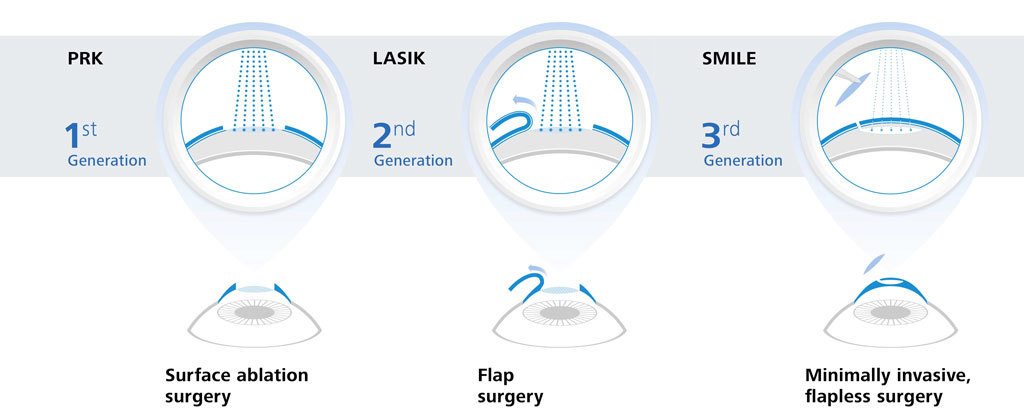Pondering SMILE Surgical Treatment? Discover Essential Factors To Consider And Understandings To Assist You In Making An Educated Decision Concerning Your Visual Prospects
Pondering SMILE Surgical Treatment? Discover Essential Factors To Consider And Understandings To Assist You In Making An Educated Decision Concerning Your Visual Prospects
Blog Article
Short Article Written By-Bridges Cooley
If you're considering SMILE eye surgery, consider this: are you prepared to embrace potential visual flexibility, or does the thought of any dangers make you be reluctant? Your decision will rest on a careful equilibrium of considering the advantages versus the uncertainties. It's important to dig much deeper right into the nuances of SMILE surgical treatment to make an enlightened choice that straightens with your aesthetic goals.
Comprehending SMILE Eye Surgery
When considering SMILE Eye Surgical treatment, it's important to understand the treatment and its benefits. SMILE, which stands for Tiny Laceration Lenticule Extraction, is a minimally intrusive laser eye surgical treatment that corrects usual vision issues like nearsightedness (nearsightedness).
Throughout the procedure, your eye specialist will use a femtosecond laser to produce a small cut in your cornea. With this cut, a little disc of tissue called a lenticule is gotten rid of, improving the cornea and remedying your vision.
Among the key benefits of SMILE Eye Surgical procedure is its fast recovery time. Several clients experience enhanced vision within a day or more after the procedure, with very little pain.
Furthermore, SMILE is recognized for its high success price in giving lasting vision correction. Unlike LASIK, SMILE doesn't call for the production of a flap in the cornea, reducing the risk of difficulties and permitting a much more secure corneal framework post-surgery.
Comprehending LASIK Vision Correction and its advantages is essential when thinking about SMILE Eye Surgery for vision adjustment.
Benefits and drawbacks of SMILE
Taking Into Consideration SMILE Eye Surgical treatment for vision correction features numerous advantages and potential downsides.
Among the primary pros of SMILE is its minimally invasive nature, as it includes a small incision and generally causes quick recovery times. The treatment is likewise recognized for causing marginal pain and completely dry eye symptoms post-surgery compared to various other vision adjustment methods. Additionally, SMILE has been revealed to provide outstanding visual results, with numerous individuals accomplishing 20/20 vision or much better.
On the other hand, a possible disadvantage of SMILE is that it may not appropriate for people with serious refractive errors, as the therapy variety is rather restricted contrasted to LASIK. An additional factor to consider is that the learning curve for surgeons carrying out SMILE can impact the accessibility of knowledgeable service providers in specific locations.
It's important to consider these pros and cons thoroughly when deciding if SMILE is the appropriate selection for your vision adjustment requirements.
Figuring Out Qualification for SMILE
To determine if you're eligible for SMILE eye surgery, your eye doctor will certainly conduct a detailed evaluation of your eye wellness and vision needs. During this assessment, factors such as the stability of your vision prescription, the thickness of your cornea, and the overall health and wellness of your eyes will certainly be analyzed.
Normally, prospects for SMILE are over 22 years old, have a steady vision prescription for at least a year, and have healthy corneas without conditions like keratoconus.
Your eye doctor will certainly also consider your overall eye health and wellness, any kind of existing eye conditions, and your lifestyle needs to determine if SMILE is the appropriate selection for you. It's essential to communicate any kind of specific visual demands or problems you might have during this evaluation to make sure that the therapy lines up with your assumptions.
If you aren't qualified for SMILE, your ophthalmologist may suggest different vision correction options that much better fit your specific requirements and eye wellness standing.
https://www.digitaljournal.com/pr/non-invasive-eye-surgery-procedures-to-improve-eyesight , deciding whether SMILE eye surgical procedure is right for you requires careful factor to consider of your private eye health and wellness and aesthetic requirements. Talk to your ophthalmologist to establish your eligibility for the procedure and consider the possible benefits and drawbacks. Keep in mind to interact any kind of worries or concerns you may have throughout the assessment process to make an enlightened decision about your vision improvement choices.
